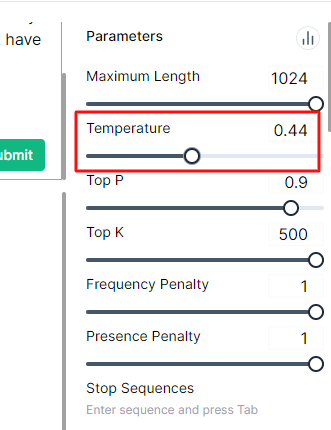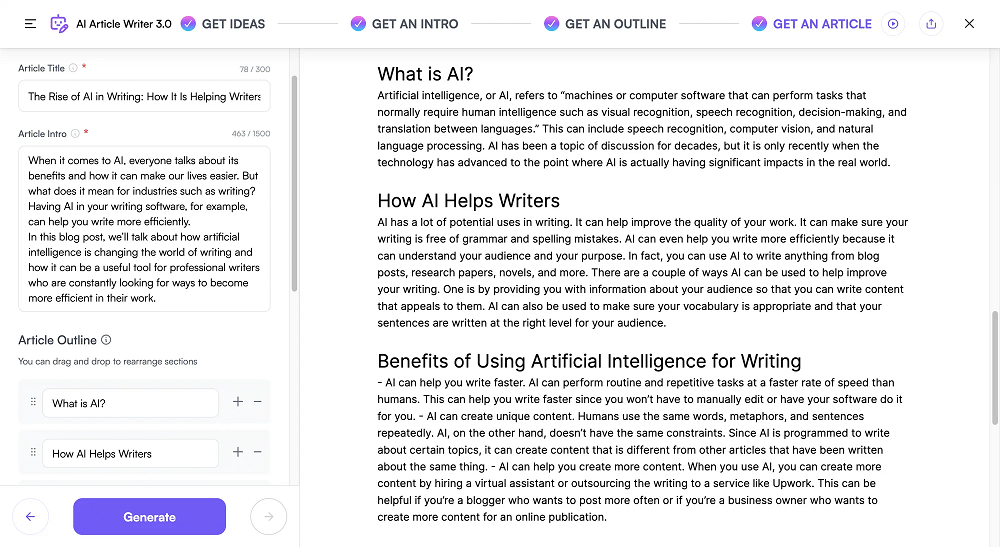5 Embarrassing Easy Ways To Bypass AI Content Detection Tools

Have you ever tried to post something online only for it to be flagged as been written by an AI tool by those pesky AI content detection tools? It can be frustrating (I know), especially when you know your content is so good and you’re not even sure what triggered the algorithm.
As a blogger, I’ve experienced this firsthand and let me tell you, it’s not a pleasant feeling.
That’s why I’ve compiled a list of 5 embarrassing (but effective) ways to trick AI content detectors and have your content flagged as 100% human (or at least close to).
These methods may seem silly at first glance, but trust me – they work!
Jasper: The #1 AI Content Platform
Jasper is the #1 AI Writing assistant that produces un-plagiarized, compelling, and AI detector free content in minutes.
(Trusted By 100,000+ Content Creators Globally)
How To Bypass AI Content Detection Tools
So, let’s see how to bypass content detection tools using these 5 embarrassing easy methods.
1. Punctuation Mistakes
I told you some of these methods might sound silly, but trust me, all it takes is a few subtle changes in punctuation and whitespace.
It’s pretty incredible when you think about it. By just adding one space or changing a period to an exclamation mark, the result becomes “more human.”
The OpenAI Detector hosted on HuggingFace is particularly susceptible to these tricks. In fact, by adding or removing just one space in the right place, the fake percentage goes down significantly.
That’s how bias these detectors can be.
But, before you start thinking that this only applies to GPT3.5 content or less advanced AI models, consider this: even some of the most popular unicorn machine text samples like OpenAI’s Text Classifier Tool, (Yes, ,the same company that developed ChatGPT) can be easily manipulated with simple spacing changes.
In the following example, I generated a 1000 character text using ChatGPT. I copy/paste it on OpenAI’s text classifier tool and I received a score of possibly AI Generated.

I then changed some spaces, removed a couple of commas only from the first two paragraphs and voila. The score immediately changed to unclear If it is AI generated.

It’s interesting to see how small details like punctuation and whitespace can make such a big difference in fooling artificial intelligence systems designed for language processing tasks.
I am sure that these are just some parameters AI developers can easily implement to their AI models in future updates but for now, it is definitely working.
2. Use a Paraphrasing Tool
AI detectors can be bypassed by rephrasing and rewording text. Even OpenAI’s internal watermarking prototype has been confirmed to be “defeatable” with enough effort.
Back in the day, like 2005, there was already software, like Wordnet from Princeton, that could make “new” content by using basic scripts and databases. Nowadays, you don’t even need special software to do it.
There are a ton of online paraphrasing tools you can simply use. Some of them are doing a pretty darn good job to be honest.
For example one of them is Quillbot. I even featured it in my article with the best AI content creation tools.
Quillbot is the only paraphrasing tool I have found to paraphrase text and still be readable. Check this simple example below:
If you used a paraphrasing tool before, you already know how their paraphrased content can be spotted from miles away.
Anw, Quillbot can be used right in your browser or as a Microsoft Word plugin. So, if you gotta make fresh content fast use a, give it a shot!
3. Increase the “Temperature”
“Temperature” is basically a “boss” setting for OpenAI’s API that affects how wild and crazy the stuff that comes out of its language model is. It’s like a dial that controls how much of a “rebel” the model will be when spitting out text – a high number means more rebel, while a low number means less rebel.
For example, if you give the model a temperature of 0 (basically just straight-up picking the most likely word every time), it’ll be pretty predictable and make sense, but it might not be that creative since it’s just sticking to what it knows.

On the other hand, if you crank up the temperature to, say, 0.9, the model goes nuts and starts making stuff up. It might come up with brand new information or use crazy combinations of words that nobody uses in real life. This can make for some super cool output, but it can also mean that there are some mistakes or inconsistencies.
Lots of cool front-end tools (front end tools to language models like GPT etc) like Jasper.ai, Anyword, and Writesonic use OpenAI’s API, and they tweak the temperature and other settings to make sure their outputs are as cool as possible without giving away that they’re made by a computer.
All in all, knowing how temperature works can help you fine-tune your model’s output so you can get either coherent or crazy text depending on what you want.
4. Mimic Famous People
What I like to do many times is I use specific prompts to make my AI writing tool write “more human”. Here are some examples:
Tell your AI writing tool to mimic the tone of voice of a specific person.
- Find a famous person that has a unique, distinctive tone of voice like Steve Harvey or Joe Rogan for example.
- Prompt your AI like this: Write a paragraph about [topic here] mimicking [famous person] tone of voice.
The AI will write mimicking the distinct tone of voice of that person and the generated content will result 70% of the time into human written content.
Note that AI content writing tools may not always know the famous person you are telling it to mimic. This is why you need to prompt it to mimic someone who has a distinct tone of voice and who is surely famous enough to be known by AI.
5. Long Form Content From Multiple Prompts
Tricking an AI content detector can be done by using tools like Jasper AI, Anyword, and Writesonic’s “Blog Wizard” to generate extended content.
By combining multiple prompts and headings, the AI generates paragraphs that are then combined into a full article.
This makes it hard for detectors to spot AI-generated content since they split the text into smaller parts for analysis.
Even copying an entire article into an AI Detector tool may not detect aggregate AI content accurately yet. However, this doesn’t mean they always fail but is much more likely.
Why Human Involvement is important in AI Content Creation
Let’s be real here – most people are turning to GPT-3 tools like WriteSonic, Jasper.ai, or Anyword to help them create their marketing content.
These advanced language models have opened up limitless possibilities for generating content that packs a punch, with newer versions like GPT3.5 and ChatGPT taking things even further.
But when it comes to creating quality, unique content for SEO agencies or brands, copywriters and content writers shouldn’t rely solely on AI text generators without proper disclosure or agreement.
That’s just the standard expectation from those hiring these professionals. On the other hand, some copywriters argue that machine-learning tools are simply aids in producing their work – much like how bookkeepers use calculators and Excel accounting software.
Of course, there’s also the matter of who the articles are written for. With automated content production becoming faster and easier by factors of 10 to 100 thanks to AI technology, what level of quality can we really expect from different publishers on various topics?
And who ensures factual accuracy when AI starts hallucinating details? It may be a feature rather than a bug that helps increase creativity among language models.
So how much human involvement is acceptable in professional marketing content? How much can be generated by AI for CVs, glossaries and sales pages?
As we continue exploring new opportunities provided by AI technology today, it’s clear that we still want assurance from our sources: Are you actually human?
Bottom Line
Having said all the above keep in mind that it’s super important to think about what this means for us.
Sure, using tricks to fool content detection tools might be helpful sometimes, but it also raises some serious questions about honesty and transparency.
If you’re a blogger or marketer or a selling content creation services, using AI text generators can definitely save you time and effort – I know – I am using them all the time.
But let’s not forget that we need to use them in an ethical and responsible way. It’s crucial to be upfront with your readers or clients when you’re using AI-generated content so they know that a human didn’t actually write it or partially wrote it anyway.
At the end of the day, even though we love how advanced technology makes our lives easier, we still have a responsibility to communicate honestly with our audience by being real about who we are online.
By the way, if you know any other tricks and tips to bypass AI content detectors feel free to leave a comment below.
Read Next




